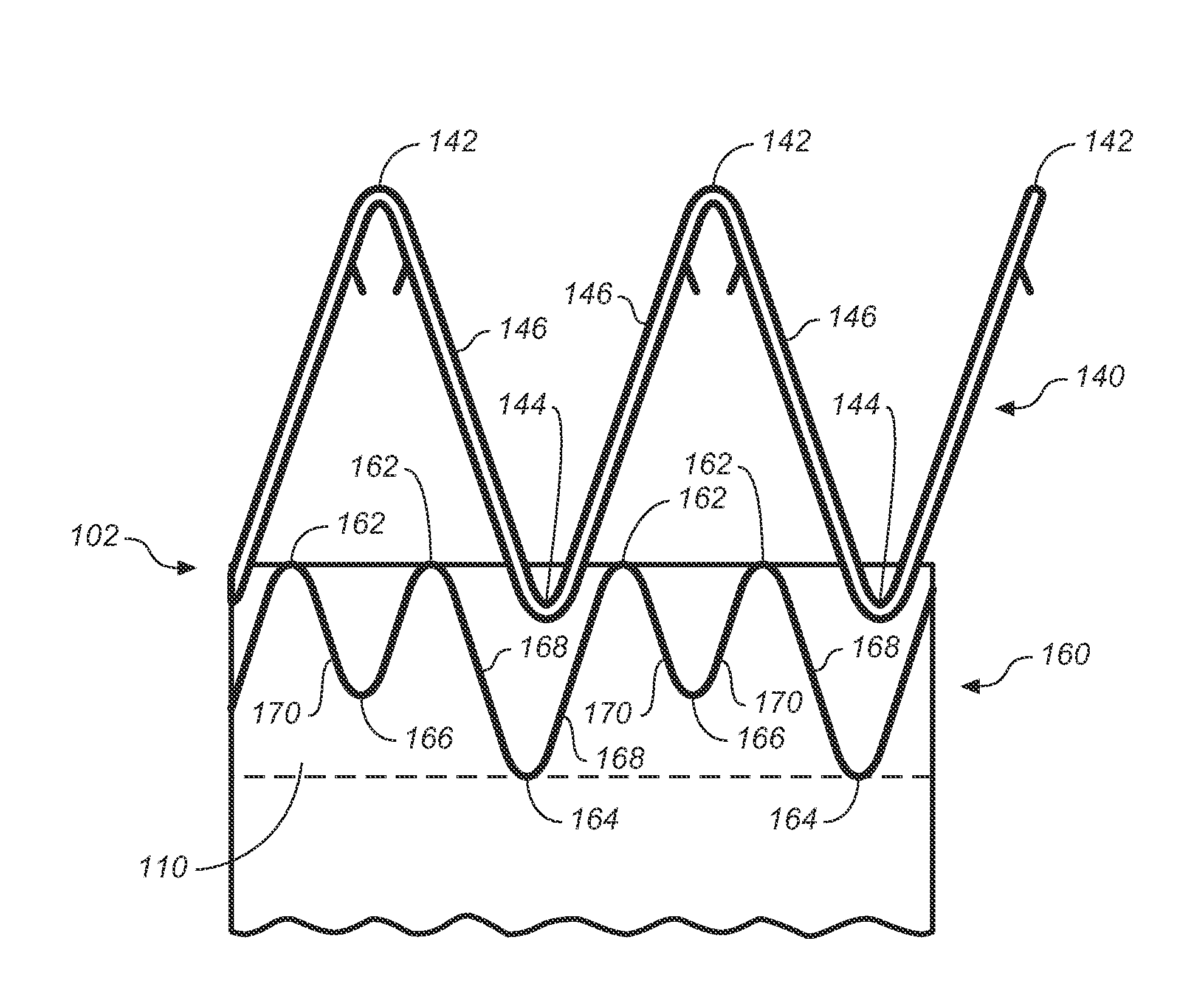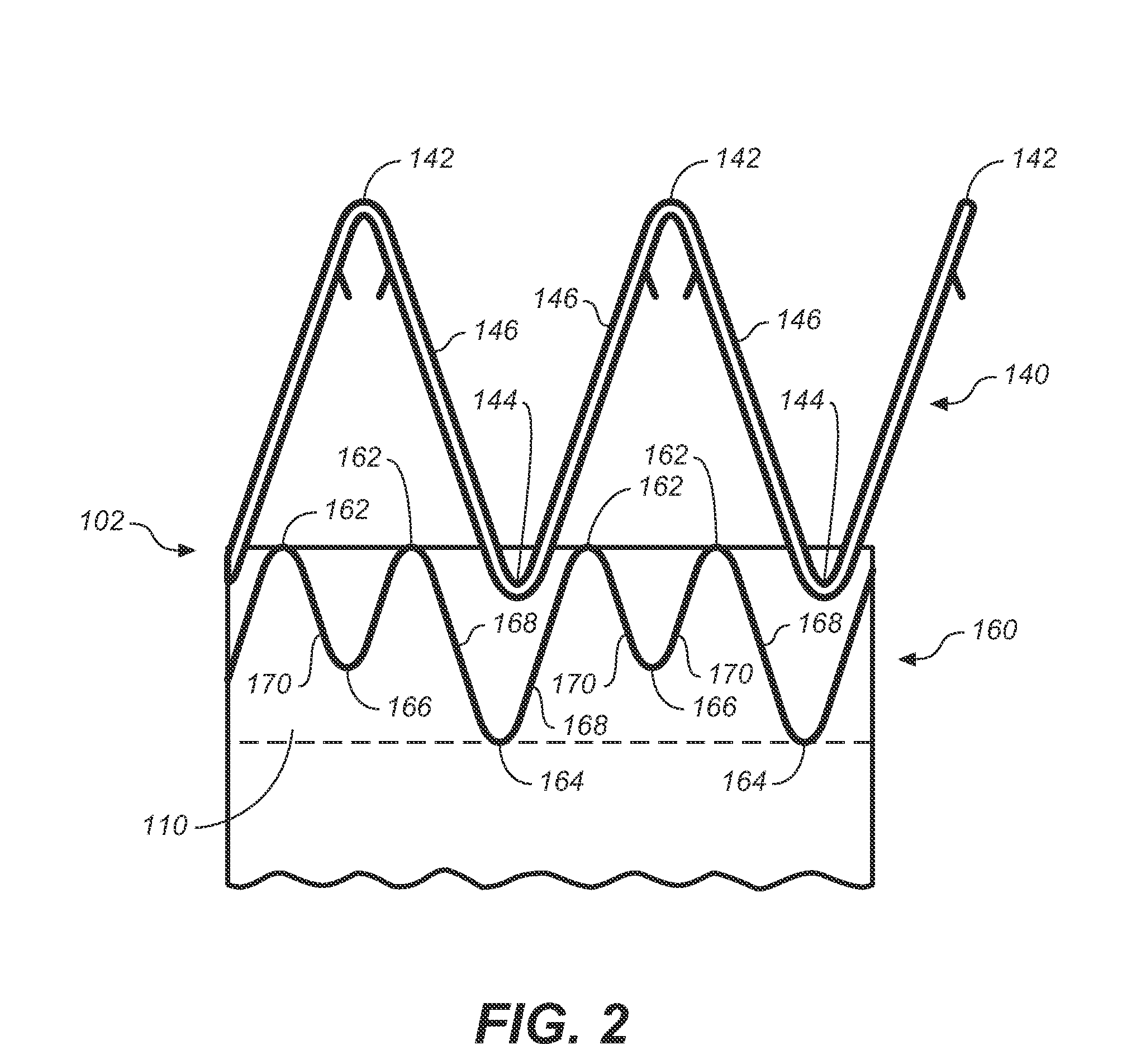Endoluminal prosthesis
a prosthesis and endoluminal technology, applied in the field of endoluminal prosthesis, can solve the problems of long recovery time, complex surgical procedure, and long hospital stay
- Summary
- Abstract
- Description
- Claims
- Application Information
AI Technical Summary
Benefits of technology
Problems solved by technology
Method used
Image
Examples
Embodiment Construction
[0024]FIG. 1 is a side view of an endoluminal prosthesis made in accordance with the present invention. The endoluminal prosthesis 100 includes a bifurcated tubular graft 110, a suprarenal spring stent 140, a sealing spring stent 160, and body spring stents 180 (dashed lines representing an imaginary line denoting the upper and lower limit of the distance between adjacent stents). The endoluminal prosthesis 100 has a proximal end 102 and a distal end 104. Proximal and distal designations are defined relative to the fluid flow in the lumen in which the stent graft is installed, with the flow being from proximal to distal. The suprarenal spring stent 140 is operably connected to the tubular graft 110 at the proximal end 102 of the tubular graft 110 to hold the tubular graft 110 open when the endoluminal prosthesis 100 is deployed. The suprarenal spring stent 140 is not covered by the tubular graft 110 so that blood can flow through the suprarenal spring stent 140 to the renal arteries...
PUM
 Login to View More
Login to View More Abstract
Description
Claims
Application Information
 Login to View More
Login to View More - R&D
- Intellectual Property
- Life Sciences
- Materials
- Tech Scout
- Unparalleled Data Quality
- Higher Quality Content
- 60% Fewer Hallucinations
Browse by: Latest US Patents, China's latest patents, Technical Efficacy Thesaurus, Application Domain, Technology Topic, Popular Technical Reports.
© 2025 PatSnap. All rights reserved.Legal|Privacy policy|Modern Slavery Act Transparency Statement|Sitemap|About US| Contact US: help@patsnap.com



